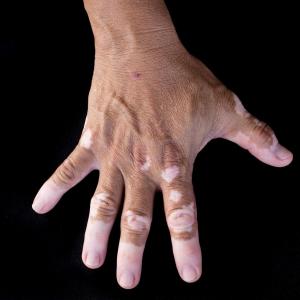The incidence of melanoma and nonmelanoma skin cancer appears to be markedly low among people with vitiligo, as reported in a study.
For the study, researchers identified adults with vitiligo using the UK electronic primary care records from the Optimum Patient Care Research Database. They matched participants with vitiligo to population controls without vitiligo according to factors such as age and sex, among others.
The primary outcome was the incidence of melanoma and nonmelanoma skin cancers (squamous cell carcinoma [SCC] and basal cell carcinoma [BCC]) and actinic keratoses, which was compared in vitiligo cases and controls using Cox regression.
A total of 15,156 vitiligo cases and 60,615 matched controls were included in the analysis. Of the vitiligo cases, 6,360 (42.0 percent) were diagnosed during the study period (incident vitiligo), and these patients had a median age of 41 years.
The 10-year cumulative incidence of skin cancer was lower in vitiligo cases than in controls (1.3 percent vs 2.0 percent). The same was true for the incidence of each individual skin cancer outcome: melanoma (0.1 percent vs 0.4 percent), SCC (0.5 percent vs 0.7 percent), BCC (0.7 percent vs 1.1 percent). The incidence of actinic keratoses, on the other hand, was comparable in vitiligo cases and controls (2.6 percent vs 2.7 percent).
Analysis showed that vitiligo was associated with a significantly lower risk of new-onset skin cancer (adjusted hazard ratio [aHR], 0.62, 95 percent confidence interval [CI], 0.52–0.75; p<0.001) as well as all skin cancer subtypes (melanoma: aHR, 0.39, 95 percent CI, 0.23–0.65, p<0.001; SCC: aHR, 0.67, 95 percent CI, 0.49–0.90, p<0.01; BCC: aHR, 0.65, 95 percent CI, 0.51–0.83, p<0.001).
Vitiligo showed no association with actinic keratoses (aHR, 0.88, 95 percent CI, 0.77–1.01).
The present data provides reassurance to people with vitiligo and clinicians managing the condition, in light of the concerns that some treatments, such as phototherapy, may increase skin cancer risk, according to the researchers.

